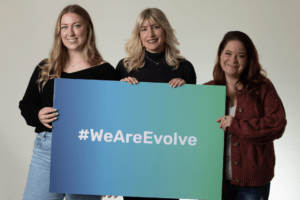A widely accepted public narrative exists about the relationship between technology use and mental health.
It goes like this: the more time you spend looking at screens and using screen-based technology, the worse your mental health is.
Most people think this is obvious.
They tend to think it’s most obvious in teens and pre-teens – and that the worst kind of media use for teens and pre-teens is social media use.
If you’ve scrolled through online news feeds over the past five years, you’ve probably seen articles that connect social media and overall internet use to depression, social anxiety, attention-deficit/hyperactivity disorder, and a host of other mental and behavioral health issues. For instance, you only need to read the title of this article – Have Smartphones Destroyed a Generation? – to understand what the author seems to believe is true: technology use is bad for mental health.
To be fair, the title does ask an open-ended question, but the subtitle belies any objectivity the article might have:
“More comfortable online than out partying, post-Millennials are safer, physically, then adolescents have ever been. But they’re on the brink of a mental health crisis.”
The casual media consumer can be forgiven for reading that title and subtitle, checking the publication – The Atlantic – and scrolling on by with a new opinion: smartphones are the culprit in a new mental health crisis that affects an entire generation.
But does the evidence support that opinion?
It’s Not Just News Articles
In addition to clickable headlines and subtitles like that, several peer-reviewed journal studies on media use among teens show associations between heavy media/social media use and mental health issues. For example, it’s easy to find articles with titles like this: “Increases in Depressive Symptoms, Suicide-Related Outcomes, and Suicide Rates Among U.S. Adolescents and Links to Increased New Media Screen Time.”
The casual media consumer can also be forgiven for reading that title, then scrolling on by with a new belief: the assertion from the first article, published in a reputable news magazine, has been confirmed by the scientists who wrote the second article, which was published in the reputable scientific journal, Clinical Psychological Science.
Let’s admit it: we do this kind of thing all the time. We don’t really want to read both articles, so we form assumptions based on the titles and sources. That’s why we dismiss headlines like “Congressman Smith is an Alien from Mars” when they’re in the National Enquirer, but might believe a headline like “Facebook and Depression: The Connection” when it’s published in The Atlantic.
For the sake of clarification, we just made up both those titles. But we think you get our point, and understand the point we’re working toward: we need to be careful about the narratives we form in our minds, especially if we don’t read articles and chase down primary sources if something about them seems fishy, sensationalist, or just plain wrong.
Back to the two real articles we mention above: they don’t offer any evidence that media use causes mental health issues in adolescents. In fact, very few studies have been designed to show that technology or social media use causes mental health problems.
A new study, however, was designed to do just that: examine whether a causal link between technology/social media and mental health issues exists – and the results contradict the popular narrative.
Screen Time and Mental Health: Are They Connected?
This study – Young Adolescents’ Digital Technology Use and Mental Health Symptoms: Little Evidence of Longitudinal or Daily Linkages – is one of the first to employ an experimental design that allows researchers to reach conclusions about three things:
- Whether technology use results in an increase in symptoms of mental health disorders over time
- Whether technology use on a given day results in an increase in symptoms of mental health disorders on that same day
- Whether individuals with preexisting mental health conditions risk exacerbating those conditions with increased media use
The reason it’s important to reach evidence-based conclusions about these questions is because digital technology is woven into the fabric of our adolescents’ lives. Teens use digital technology to communicate, create, and learn. They use it to entertain themselves. They use it at home and at school. Smartphones allow them to use it in all the interstitial times as well: between class, on the bus, at lunch, or during any pocket of downtime that presents itself during the course of a day. Its prevalence demands that any rules we form or policies we create are based on data derived from sound experiments.
Which brings us back to the dominant narrative in the media and – if we’re honest – in most of our heads: too much digital technology is bad for teens’ mental health. Despite everything we read and all the anecdotes we hear, and despite the well-known fact that both Steve Jobs and Bill Gates limited their kids’ technology use, the data does not support this narrative.
In fact, the largest meta-analysis conducted (meta-analyses are studies that analyze the results of all the available evidence on one topic) included over three hundred fifty thousand individual subjects and concluded the following:
“The association we find between digital technology and adolescent well-being is negative but small, explaining at most 0.4% of the variation in well-being. Taking the broader context of the data into account suggests that these effects are too small to warrant policy change.”
That’s why we need clarity on the subject. The data says technology has a minimal negative impact on adolescent wellbeing, yet the world – including people who make big decisions that affect national education policy, teachers who make daily decisions in their classrooms, and parents who make small decisions for their children every day at home – seems sure the opposite is true. That’s why we need experiments that can gauge causality, like the one we’ve introduced above and are about to discuss right now.
Let’s get to that study, shall we?
Long-Term and Daily Effects of Technology on Mental Health Symptoms
Researchers recruited 1,867 pre-, early-, and mid-adolescents from diverse social, geographic, and economic backgrounds in North Carolina and administered two series of tests. The first was designed to gauge their initial mental health and technology use status. That involved a simple telephone survey conducted in 2015, when the subjects were between 12 and 15 years old. It established their baseline levels for mental health symptoms and technology use.
The second phase of the study took place two years later, with a smaller cohort of respondents. Researchers structured that follow-up differently. They selected a subsample of 388 students from the original sample, based on location, willingness to participate in the second phase of the study, and demographic status. Researchers conducted home visits that included interviews and preparation for a two-week test period, during which participants completed three daily surveys – morning, afternoon, and evening – that assessed their technology use, behaviors, and mood. Eighty percent of these 388 students completed this phase, resulting in the collection 13,017 data points over a total of 5,370 study days.
The researcher designed the daily questions during the second, two-week phase of the study to collect data on the following:
Technology Use
- Number of texts sent each day
- Hours spent online for:
- School work
- Communication
- Entertainment
- Creating content
Mental Health Symptoms
- Externalizing symptoms:
- Attention
- Hyperactivity
- Impulsivity
- Behavioral symptoms:
- Aggression
- Conduct
- Internalizing symptoms:
Let’s take a look at those technology use results. Researchers found that, during the two-week test period, adolescent participants in the study:
- Sent an average of 47 texts per day (11% said they sent never sent texts)
- Spent an average of 4.2 hours per day using screen-based technology (3.4% said they never used technology)
- School work: 0.8 hours per day (20% said they never used technology for school)
- Communication: 1.3 hours per day (14% said they never used technology to communicate)
- Entertainment: 1.8 hours per day (5.8% said they never used technology for entertainment)
- Creating content: 0.4 hours per day (46% said they never used technology to create content)
Now, let’s take a look at the mental health results. These results refer to differences between the baseline data collected during the first phase of the study (T1) and data collected in the second, two-week phase of the study (T2).
Here’s what they found:
- Technology access and frequency of use was unrelated to later symptoms of attention, hyperactivity, conduct, depression, and anxiety.
- Technology access and frequency of use did not predict any increase in mental health symptoms.
This next series of results describes the relationship of daily technology use to mental health symptoms.
Researchers found:
- No daily linkage, in general, between technology use and mental health symptoms.
- The days when adolescents reported higher numbers of texts sent, technology use for school, communication, entertainment, or content creating were not more likely to be days when they reported more symptoms for externalizing or internalizing mental health symptoms.
- Average daily use of technology for schoolwork, specifically, was related to higher average levels of conduct problems and depressive symptoms.
- Daily time spent using technology for entertainment was related with lower levels of same-day anxiety.
In addition, researchers identified the following results for adolescents with preexisting mental health and/or conduct issues:
- Over the entire sample set, average daily technology use was not related to a daily average increase in mental health symptoms.
- Over the entire sample set, average daily technology use was not related to a daily average increase in conduct problems. However:
- For younger participants, more technology use for entertainment was associated with an increase in conduct problems.
- For older participants, more technology use for entertainment was associated was associated with a decrease in conduct problems.
Finally, we should mention two unique observations researchers made:
- Average daily use of technology for schoolwork and entertainment, specifically, was associated with increased symptoms of hyperactivity, activity, and depression.
- Participants at the highest end of daily technology use for content creation showed fewer conduct problems and fewer depressive symptoms, compared to participants who reported average use.
With regards to these last two points, we should point out that these associations appeared when analyzing technology use in those particular categories. The associations did not reach significance when considered in relation to total time spent using digital technology.
Creating an Evidence-Based Narrative
Let’s revisit the three questions at the heart of this new study and determine whether the answers researchers report support or contradict the dominant narrative that the more pre-, early-, and mid-adolescents use technology, the worse their mental health will be.
Here are the questions:
- Does technology use result in an increase in symptoms of mental health disorders over time?
- Does technology use on a given day results in an increase in symptoms of mental health disorders on that same day?
- Do individuals with preexisting mental health conditions risk exacerbating those conditions with increased media use?
The data in this study answers these questions with a clear and simple “no.”
Moreover, the areas where researchers found significant associations between technology use and mental health symptoms confound the dominant narrative: adolescents who sent more text messages reported fewer depressive symptoms, and adolescents who spent more time using technology for schoolwork reported more symptoms related to attention and hyperactivity.
The general results – technology use is not associated with an increase in mental health problems – and the granular surprises – more texting associated with less depression and more technology for schoolwork associated with more inattention/hyperactivity – mean that we need to rewrite our narrative around technology use and mental health among adolescence.
It’s tempting to point to these new cultural developments, i.e. all the various manifestations of digital technology, as the culprit in the overall increase in mental health disorders among adolescents seen over the past decade. The evidence, though, simply does not support the idea that technology use is to blame. Indeed, the results show that it’s important for parents, teachers, and policy makers to understand that it’s the manner and type of technology use that may impact adolescent mental health both positively and negatively, rather than the amount of technology use itself.
New Directions
The results seem to verify a point of view offered by the authors of the massive meta-analysis we mentioned above, published by UNICEF in 2017:
“Instead of focusing only on the impacts of time spent on digital technology, researchers should pay more attention to the influences of the content children encounter and the activities they participate in online, in addition to their social and family environments.”
We agree. Our experience tells us that when we help adolescents overcome any challenges they face in life, from mental health disorders, to conduct problems, to alcohol or substance use disorders, the most important thing to remember is to address the whole person. That means everything that affects their lives, including personal, family, and social dynamics. When we focus on one thing at the expense of the others, we sell our teenagers short. When we step back and look at the big picture, though, we understand that a comprehensive, integrated, and holistic approach to difficult issues works best for teens and families – and leads to the most positive outcomes for our society as a whole.






























































